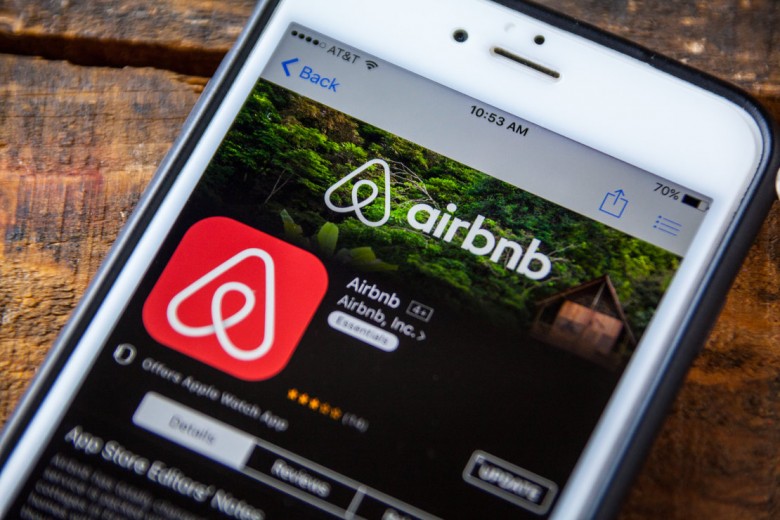150 million guests. 65,000 cities. 191 countries. 3 million listings (of which 1,400 are castles!).
When we talk about growth and scale, few companies rival AirBnB. In less than ten years, AirBnB has achieved all of the above, severely disrupting the hospitality industry. Impressive as that is, the more pertinent questions for us entrepreneurs are:
- How exactly did AirBnB achieve that growth?
- What can we learn from them?
How AirBnB Achieved Their Growth
One particular story of how AirBnB broke into New York City stands out because the founders, Brian Chesky and Joe Gebbia, encountered a problem that all entrepreneurs face – acquiring customers in a crowded marketplace.
In the summer of 2009, while searching for office space in NYC, Chesky decided to stay exclusively with AirBnB hosts to understand firsthand what AirBnB was like from a customer’s perspective and see where improvements could be made. He felt by taking the time to understand the customer experience, he might find out why the NYC market was underperforming.
After booking and staying with over twenty-four hosts, Chesky and Gebbia discovered a common theme: hosts weren’t presenting their apartments well! According to Gebbia, “The photos were really bad. People were using camera phones and taking Craigslist-quality pictures. Surprise! No one was booking because you couldn’t see what you were paying for.”
From there, Chesky and Gebbia decided to rent out camera equipment, go to as many AirBnB listings as possible, and take the photos professionally themselves. As a result of these photos, over twice as many reservations were made in New York City, and revenue doubled within a month.
Beyond New York City though, the same issue prevented growth in other major cities such as Paris, London, Vancouver, and Miami. However, instead of taking the photos themselves for these cities, Chesky and Gebbia decided to start a photography program where hosts could have freelance photographers take photos of their accommodations free of charge. This started off with just 20 photographers, and by 2012, the program had grown to over 2,000 freelance photographers taking photos at over 13,000 listings. Expensive as this initiative was, Chesky and Gebbia found travelers were 2.5 times more likely to book at these enhanced listings (earning their hosts on average $1,025 a month), and found the benefits far outweighed the cost.
To illustrate the results of the photography initiative, here’s how AirBnB have grown since.
What Lessons Can Entrepreneurs Learn?
Lesson 1: Using Your Own Product
For Chesky and Gebbia, the key turning point was Chesky staying exclusively at AirBnB apartments during the summer of 2009 because it gave him insight to his customers’ AirBnB experience.
For us entrepreneurs, because we are so close to our own products, it can be hard to put ourselves in our customers’ shoes and understand things from their perspective. However, understanding our business through our customers can easily be one of the most crucial things we do.
On my part, I run a graphic tee store that focuses on passionate hikers. In the beginning, I only sold cotton tees because I knew they were the highest margin products, and as a businessperson, who doesn’t want to make more money per sale?
What I found after wearing my own product while hiking though, was that hiking in a cotton shirt (especially in black) was hot and unsuitable for hiking! In hindsight, this was an issue I should have realized before and I should have known my customers would appreciate other product options like tank tops or dry fit shirts.
After sending out mass emails to my customers asking if that was the case, a majority agreed they would purchase again if that option was made available. Since then, I’ve found a supplier who provided these types of goods, and now dry fit goods make up over 25% of all my sales.
Lesson 2: Focus on the Unscalable
When Chesky and Gebbia realized the photos presenting the AirBnB listings were the problem, they could have come up with another solution. In Chesky’s words, “A web startup would say, ‘Let’s send emails, teach [users] professional photography, and test them”, but instead they chose to take the photos themselves because they felt that was the most efficient way to get the best pictures of apartments.
In his essay “Do Things that Don’t Scale”, Paul Graham (Founder of Y-Combinator and mentor to Chesky and Gebbia) wrote that, “The most common unscalable thing founders have to do at the start is to recruit users manually,” and for AirBnB this meant a combination of manually going to each hosts’ listing and taking professional photos themselves. Tedious as this was, by focusing on what the end user wanted (quality representation of where they would be staying during a vacation), Chesky and Gebbia provided a service far superior to what was available at the time and so delighted their customers. Although their photo taking efforts were scalable forever, the initial push made a huge impact on their overall business as seen in the previous graph.
This advice worked for me as well. When I first started marketing my graphic tee business, I didn’t have much success reaching out to people and sales through advertising.
So instead I tried something new – running a contest to give away a free shirt where all the entrant had to do was tell me one thing I could do to improve my store. This resulted in a Facebook post with over 100 comments. I read through each comment, made the change if it was possible, and personally replied and thanked the entrant for his or her comment.
This was a time-consuming process, but going through it allowed me to understand my business from the eyes of my customers and improve my online store immensely, likely resulting in thousands of dollars’ worth of sales.
Lesson 3: Outsourcing to Focus on Higher Leverage Activities
While Chesky and Gebbia’s initiative of taking photos for hosts’ listings in New York City was undoubtedly a successful one, as the founders of the company, this couldn’t go on indefinitely, so it made sense that they should outsource the work and move on to higher leverage activities.
The key point to remember here is Chesky and Gebbia could only outsource the work AFTER they understood the requirements. If they didn’t go out and take the photos themselves, they could not have known which types of photos were important, or how to coordinate the hosts and photographers’ meetings. By going through the process themselves, they knew how to avoid little roadblocks and run the freelance photography program smoothly.
In my case, one of the tasks I eventually had to outsource for my business was customer service. Like Chesky and Gebbia though, for me to successfully outsource this work, I had to have done the work myself, come up with the right systems and answers for commonly asked questions, so that I could teach my virtual assistant how to respond to certain inquiries. If I tried to outsource immediately without going through the process myself, neither I nor my virtual assistant would know how to respond to customer questions, and the entire purpose of outsourcing would have been purposeless.
How Will You Apply These Lessons?
AirBnB’s story provided me with a lot of inspiration in growing my own small business. How about you? Are there ways you can apply some AirBnB’s lessons to your own business?
Let me know in the comments below, I’ll be waiting to reply!











Pingback: Do One of These 12 Things to Make Extra Cash Monthly - StartUp MindsetStartUp Mindset
Pingback: 4 Necessary Marketing Skills for First Time Solopreneurs - StartUp MindsetStartUp Mindset